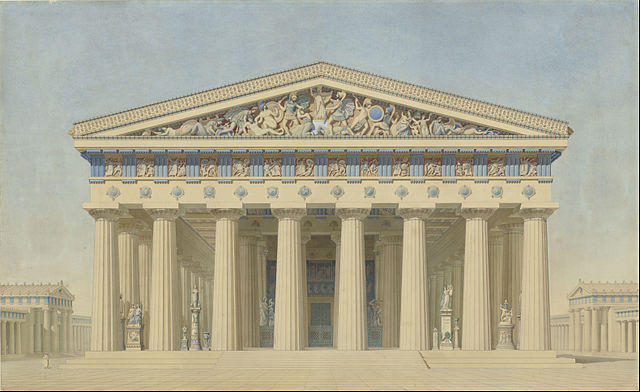There are many examples of of Doric columns in ancient and more contemporary structures.
The Parthenon
Built in the 5th century BCE, the Parthenon is the most famous surviving building in the Doric Order. Built to honor the Greek goddess Athena the Parthenon is considered to be an ideal example of Greek achievement and the finest example of the Doric Order.
The Parthenon is a peripteral Doric temple, meaning that columns run not only in the front of the the structure but along the sides as well, as shown in the plan to the right. The base of the Parthenon is 228 x 101.4 feet. The exterior Doric columns are 6.2 feet in diameter and 34.1 feet tall.
Parthenon links:
The Temple of Hephaestus
Near the Parthenon in Athens, the Temple of Hephaestus is the most complete surviving example of the Doric Order as applied to a Greek temple. It was built almost entirely of marble during the years 449 to 415 BCE.
Temple of Hephaestus links:
The Temple of the Delians
On the island of Delos, the Temple of the Delians is a classic example of the Doric Order. Construction for the temple begain about 478 BCE, but it was never completed. The columns are not fluted and sit directly on the floor without the benefit of a base or plinth.
Lord Hill’s Column
The tallest Doric colum in the world is Lord Hill’s column which stands outside the Shirehall (similar to county offices) in Shrewsbury, Shropshire, England. The column is 133.5 feet tall and has a 17 foot statue on the top. The column was built between 1814 to 1816 to honor Rowland Hill, 1st Viscount Hill, who served England during the Napoleonic Wars, including the Peninsula Campaign and the Battle of Waterloo.

